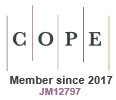WF25089Wildfire risk assessment in Sichuan Province, China: hazard modeling approach considering different combinations of classification criteria and connection values of factor attributes
This study investigated the impact of connection methods and classification criteria of factor attributes on wildfire hazard assessment. An integrated risk framework was constructed to reveal southwestern Sichuan’s mountainous regions as critical high-risk zones influenced by hazard-vulnerability-adaptive capacity interactions, offering targeted prevention strategies.
This article belongs to the collection: Multi-scale Measurements in Support of Improved Fire, Fuel, and Smoke Models of Landscape-Level Wildland Fires.
WF25089 Abstract | WF25089 Full Text | WF25089PDF (6 MB) | WF25089Supplementary Material (1.4 MB) Open Access Article







